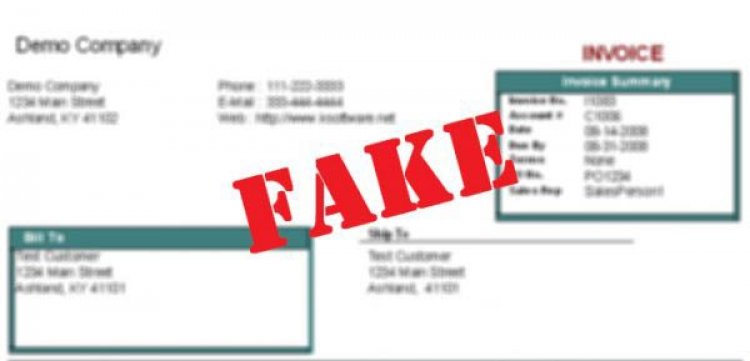Fake GST Tax vs Real GST Tax
The CBIC adopted e-invoicing with the goal of tracking all fake invoices under GST and reducing tax fraud in India. Let's know how to identify the fake GST tax vs real GST tax.

There have been a number of recent reports of taxpayers claiming ITC without actually providing the products and issuing bogus GST invoices in the process. So, let's look at how to spot a fake GST bill. We've included all of the information you'll need to recognise fake GST invoices.
Fake Invoices
Fake invoices are issued to targeted organisations in an attempt to steal money from corporations with weaknesses in their accounts payable procedures, which is known as invoice fraud. Fraudsters target a firm based on its size and location in order to narrow down the types of providers it uses on a regular basis, such as office supplies, cleaning services, and so on. They then use this information to construct false invoices on behalf of these vendors that seem real save for minor differences like changing addresses. They send these fake bills with a sense of urgency, such as 'This Invoice is 90 days overdue,' knowing that most Accounts Payable departments are continually playing catch-up.
What is the difference between a real GST invoice and a fake GST invoice?
Under GST, a registered taxable person is required to submit an invoice containing all relevant information, such as the GSTIN, tax bifurcation, and so on.
If a taxpayer provides an invoice that is lacking critical information, the invoice may be considered a fake GST invoice.
5 Ways to Identify Fake GST Invoices
1. The individual must be GST-registered.
If a taxpayer isn't registered, he or she won't be able to charge GST to their customer. The following is a list of people that need to register for GST:
- Anyone with total revenue of more than INR 20 lakhs.
- Anyone who works in the interstate supply chain.
- Operators of e-commerce.
- As required by the GST law, any other individual.
Furthermore, anyone who does not fall within the foregoing categories can voluntarily register for GST.
2. The GSTIN should appear on the invoice.
Every taxpayer who is registered for GST is granted a GSTIN, which is a unique identifying number. And, according to GST rules, an e-invoice must include a valid GSTIN, which makes it easier for the taxpayer to collect ITC.
3. GSTINs should be well-structured.
Every taxpayer is assigned a 15-digit alphanumeric code known as a GSTIN. The first two characters reflect a state code that has been allocated to you. The following ten characters represent a company's Permanent Account Number (PAN). The 13th character represents the number of entities that a company has in a certain state. The final or fourteenth character will always be Z.
An irregular digit will be the 15th character. For GST authorities' internal checks, it might be a letter or a number.
4. The GSTIN on the invoice must be valid.
To see if a GSTIN on an invoice is legitimate, go to the GST site. You must take the following steps:
Step 1: Go to the GST portal's "search page."
Step 2: Input the GSTIN from the invoice.
Step 3: Select "search" from the drop-down menu.
If the GSTIN is legitimate, it will display the following information:
- The company's trade name and legal name
- GST registration date
- Jurisdiction of the State and the Center
- Type of business or taxpayer
- Status of GSTIN or UIN
GST Rates That Are Correct
It is possible that the taxpayer will charge the incorrect GST rates. Either the merchant did not properly categorise the item, or the individual in an issue made a mistake when bifurcating the CGST and SGST. In such circumstances, the taxpayer should consult the GST website for rates on products and/or services. You may use this to see if the products or services you're getting are GST-free.
Conclusion
As we all know, the government is always attempting to prevent tax evasion and fraudulent GST billing. We may also assist ourselves by employing the five methods outlined above to detect fraudulent GST invoices.


 Local BangaloreTeam
Local BangaloreTeam 









